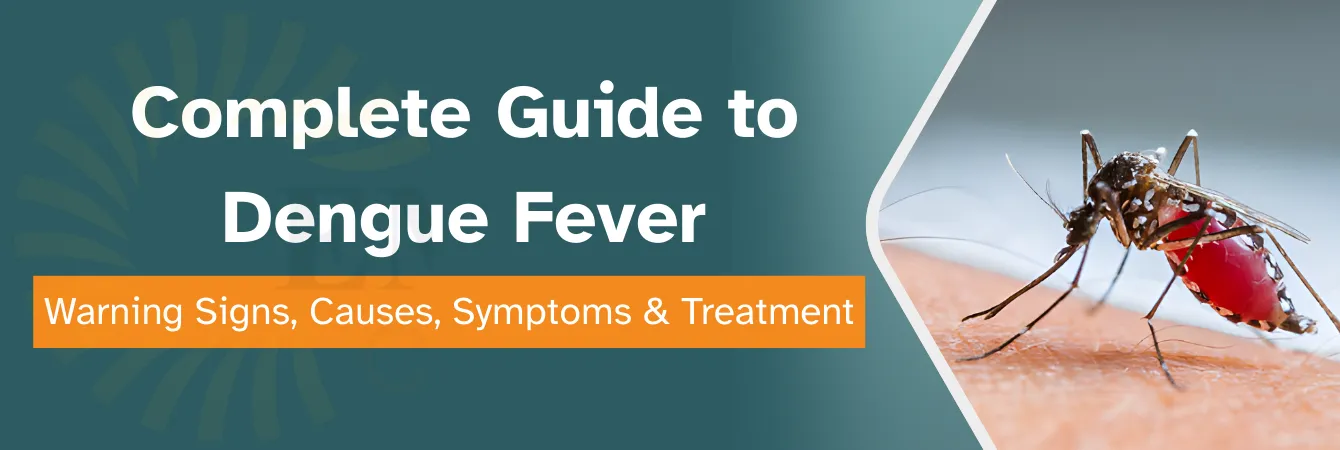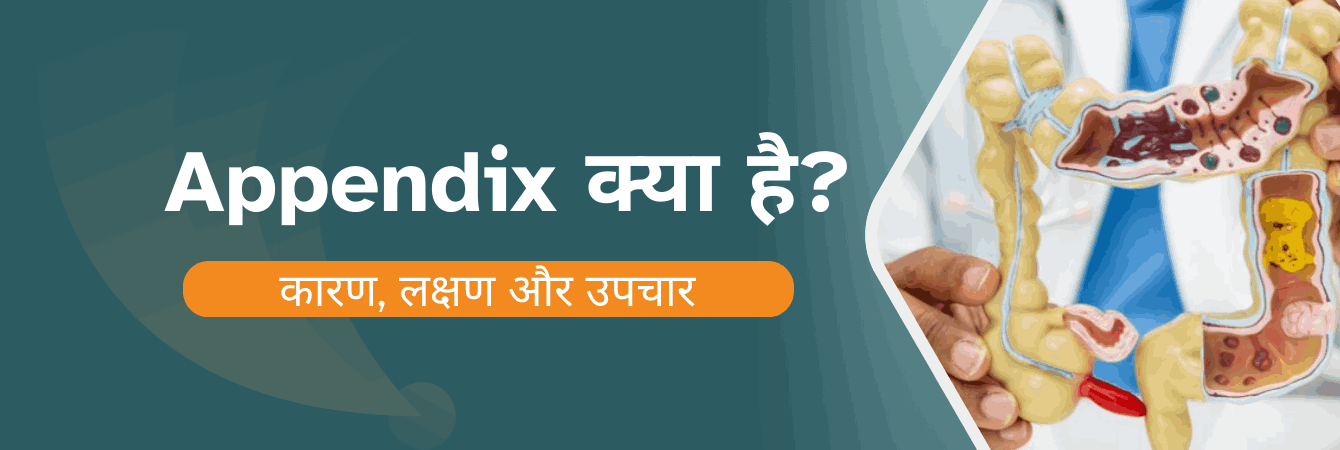Dengue Fever Explained: Warning Signs, Causes, Symptoms & Treatment
- August 16, 2025
- Abrol Hospital
Dengue fever is one of the most common mosquito-borne viral diseases, spreading rapidly in tropical and subtropical regions around the world. It is transmitted through the bite of an infected Aedes aegypti mosquito. The infection is often referred to as “breakbone fever” because of the intense joint and muscle pain it causes. Accurate diagnosis and appropriate treatment can be ensured by consulting with experienced internal medicine specialists. Every year, millions of cases are reported worldwide, making it a major public health concern. The World Health Organization (WHO) states that nearly half of the global population is at risk of contracting dengue.
Dengue Fever Causes
Dengue Virus and Its Types (DENV 1–4)
The disease is caused by the dengue virus (DENV), which has four distinct strains: DENV-1, DENV-2, DENV-3, and DENV-4. Once a person recovers from one strain, they develop lifelong immunity against it. However, infection with a different strain increases the risk of severe dengue in the future. This means a person can have dengue multiple times, and the second or third infection often tends to be more dangerous.
How It Spreads Through Aedes Mosquitoes
Transmission happens when a female Aedes mosquito bites a person already infected with dengue. The virus then multiplies inside the mosquito and is passed on when the mosquito bites another healthy person. Unlike most mosquitoes that bite at night, Aedes mosquitoes are aggressive daytime biters, making dengue harder to avoid.
Risk Factors for Dengue Infection
Certain factors increase the chances of contracting dengue, such as living in densely populated cities, areas with stagnant water, poor sanitation, and regions with heavy rainfall. Travelers to tropical countries are also at high risk. People with weakened immune systems or who have already had dengue once are more likely to develop severe complications.
Understanding the 4 Stages of Dengue Fever
Febrile Stage
This stage is marked by sudden high fever (often up to 104°F), intense headache, pain behind the eyes, nausea, and skin rashes. It lasts between 2–7 days, and many patients mistake it for a regular viral infection.
Critical Stage
This is the most dangerous phase. It usually occurs after the fever subsides, giving a false impression of recovery. In this stage, fluid leakage, low platelet count, and internal bleeding may occur. If untreated, the patient may progress to severe dengue or shock syndrome.
Recovery Stage
In the recovery stage, the patient’s condition improves gradually. The appetite returns, energy levels increase, and fluid absorption stabilizes. Rash and itching are common during this stage, signaling that the body is healing.
Severe Dengue Progression
Some patients develop severe dengue, characterized by plasma leakage, organ impairment, or shock. This stage requires hospitalization and intensive care because it can become life-threatening within hours.
Dengue Fever Treatment
There is no direct cure for dengue. Treatment focuses on relieving symptoms and preventing complications. Patients are advised to rest, stay hydrated, and take paracetamol for fever and pain. Aspirin and ibuprofen should be avoided as they can worsen bleeding. Severe cases may require hospitalization, IV fluid replacement, and platelet transfusions if levels drop dangerously low.
7 Warning Signs of Dengue Fever
Daingue fever symptoms Recognizing early can save lives. There are several warning signs that we feel in our body that may cause daingue fever. These are:
Severe Headache – Intense headaches that do not respond to regular painkillers are common in dengue.
Pain Behind the Eyes – A unique symptom, causing discomfort and sensitivity to light.
Joint and Muscle Pain – Known as “breakbone pain,” this is one of the most painful aspects of dengue.
Skin Rash – Red rashes or tiny spots appear within a few days of fever, indicating low platelet count.Bleeding Symptoms – Gum bleeding, nosebleeds, or easy bruising signal that the body’s clotting ability is compromised.
Persistent Vomiting – Continuous nausea and vomiting may indicate fluid imbalance and dehydration.
Fatigue and Weakness – Severe tiredness even after rest is a hallmark of dengue.
Take Action – Don’t Wait, Consult Our Doctor Today!
If you or your loved ones are experiencing high fever, body aches, rashes, any of the warning signs of dengue or dengue symptoms, don’t take chances with your health. Dengue can progress rapidly, and early medical attention makes all the difference between a quick recovery and dangerous complications.
Your health is too important to ignore. Whether it’s for a consultation, diagnosis, or ongoing care, our doctors are here to support you every step of the way.
👉 Book your consultation today and let our doctors help you recover safely.
FAQs (Frequently Asked Questions)
Dengue usually lasts 7–10 days, with fever present for the first 2–7 days followed by recovery.
Foods rich in Vitamin C (oranges, papaya), iron (spinach, beetroot), and fluids (coconut water, juices) help boost immunity and support platelet recovery.
Dengue often comes with severe joint pain, pain behind the eyes, rashes, and low platelet count, which are not common in normal viral fevers. A blood test is the only sure way to confirm.
Yes, since there are four different strains of the dengue virus, you can get infected again with another type, and subsequent infections may increase the risk of severe dengue.



